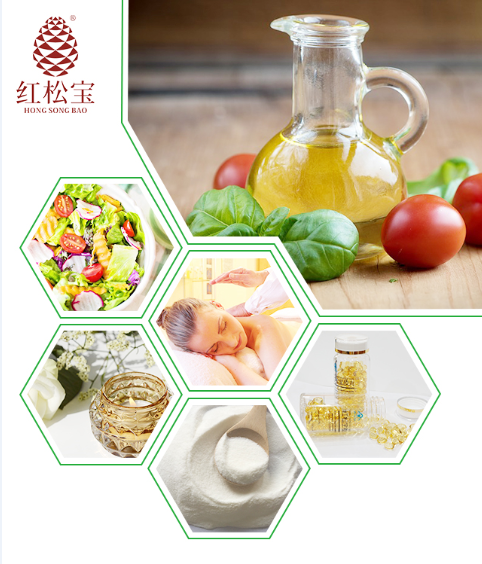Pine Nut Oil was known as its function of anti-inflammatory,diabetes treating, obesity treating,etc, used in health care and cooking. Abundant vitamins and minerals gurantee a top quality than other oils, especially Pinolenic Acid, which is only exsits in pine nut oil. And scientists found Red Pine Nut Oil or korean pine nut oil is recommended firstly to improve health. Red pine nut oil cold pressed from red pine, which grows in Changbai Moutain, is a treasure of nature for worldwide. Pine Nut Oil Pine Nut Oil,Extra Virgin Pine Nut Oil,Pine Nut Oil Benefits,Pine Nut Oil For Ulcers Jilin Painuo Biological Technology Co.,Ltd , http://www.painuo-biotech.com
Clever Use of Water Quality Improvement Agents for Aquaculture Increase Income
The high-density fish and shrimp breeding pond has a large amount of residual baits and feces and the water quality is easily deteriorated. Biologically active water quality improvers can convert ammonia and hydrogen sulfide and other harmful substances in water bodies and sediments into beneficial substances, thereby improving water quality, promoting the growth of fish and shrimps, and increasing production and income. Commonly used biological activity improvers include the following six types: 1. Photosynthetic bacteria: High-density fish and shrimp ponds contain large amounts of feces and residual baits. After transformation, harmful substances such as ammonia nitrogen and hydrogen sulfide are generated, and water bodies and sediments are polluted. Causes slow growth of fish and shrimp and even poisoning. At the same time, after the eutrophication of water bodies, pathogenic microorganisms will breed, fish and shrimp will infect. The photosynthetic bacteria can absorb some toxic substances in the water, grow into their own effective cells, and form dominant communities, inhibit the growth of pathogenic microorganisms and purify water quality. Apply photosynthetic bacteria, seedling pool each with 10-50 mg / l; adult fish, shrimp, crab pool for the first time with 5-10 mg / l, after the use of halved, every 7-10 days interval. 2. Nitrifying bacteria: In the water environment, nitrifying bacteria can convert ammonia or amino acids decomposed or synthesized by saprophytic bacteria and azotobacter into nitrates and nitrites, so that toxic components in water bodies and sediments can be converted into non-toxic components. Purify water quality. Nitrate bacteria 2-5 mg/l were administered into adult fish, shrimp and crab ponds. 3. Lactic Acid Bacteria: Lactic acid bacteria are anaerobic bacteria that produce lactic acid by uptake of photosynthetic bacteria and sugars produced by yeasts. Lactic acid has a bactericidal effect, can inhibit the harmful microbial activity, proliferation of pathogenic bacteria and inorganic matter spoilage; and can decompose woody and cellulose organic matter, which is beneficial to the absorption of plants and animals. 4. Yeast flora: Saccharomyces is an aerobic flora that can use the root secretion of plants and other organic substances to produce fermentation force to synthesize active substances that promote root growth and cell division. Yeast can provide a proliferation matrix for lactic acid bacteria, actinomycetes, and the like, providing animals with single cell proteins. 5. Gram-positive actinomycetes: Gram-positive actinomycetes are aerobic flora. It can obtain substrates from photosynthetic bacteria, produce a variety of antibiotics and enzymes, directly inhibit pathogens, and can be in advance to obtain the proliferation of harmful mold and bacteria matrix, and promote the proliferation of beneficial microorganisms. Combination of actinomycetes and photosynthetic bacteria is more effective. It also degrades lignin, cellulose, and chitin substances and facilitates the absorption of plants and animals. 6. Reactive oxygen: Active oxygen is suitable for ponds containing high levels of harmful substances such as ammonia nitrogen, nitrite nitrogen, and hydrogen sulfide. High-density shrimp ponds, squid, soft-shelled turtles, etc. , Poor coloured ponds, prevention of fish and shrimp seedlings and long-distance transport, fishing, fish and shrimp deaths during separation. The application of active oxygen in water can promote the growth of fish and shrimps, improve the sediment quality of the pool, and improve the survival rate of overwintering sheds. Adding feed to feed can reduce the saprophytic bacteria in the intestines of fish and shrimp, maintain the health of the intestines, and can directly kill and Inhibit the growth of pathogens and increase the number of beneficial bacteria, so as to accelerate the absorption and utilization of feed nutrients by fish and shrimp. The depth of water is 1 meter, 5-6 kilograms of active oxygen per acre, and 8 kilograms when water quality deteriorates. Note: Bioactive water quality improver can not be mixed with antibiotics or disinfectants. Do not change water or change water in small quantities within 3 days after use. Do not use photosynthetic bacteria on rainy days.
